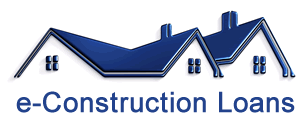There are three basic approaches to home construction, site built, modular and manufactured. Site built homes, also known as “stick built” in the industry, are constructed entirely on the building site. Site built homes could be a panelized home, or a kit home, such as a cedar home or a log home. In the case of panelized, the panels are constructed in a factory and delivered. In the case of kit or log homes, the special construction materials are precut and delivered. For log homes, historically construction loans are very difficult to obtain because log home comparable sales will be required on the appraisal, and in a slow market it would be unlikely that these would be close enough, similar enough and recent enough.
Modular homes are built in sections at the vendor’s factory, usually to pre-exisiting plans. Custom modular homes are possible when the buyer pays additional engineering fees. Modular homes sections are transported to the site on trucks, and usually removed by a crane that swings it right into place on top of a recently built foundation, or onto other previously installed sections of the structure. A typical section might be a couple of rooms. Upgrades and finishes are often installed on site by the contractor who built the foundation and is responsible for the entire job. Like stick built homes, modular homes conform to all local and state building codes, and once completed, should be indistinguishable from a stick built home. Appraisers are not expected to use only modular home comps. Total construction costs are generally significantly lower and construction time shorter for modular homes.
From a construction lending standpoint, the major implication of modular home construction is the timing of the payments to the modular home vendor. Modular home dealers typically want a deposit, some money during the manufacturing period, and the rest on delivery. Construction lenders disburse money in draws subsequent to the work being done. They want to lend more money when the real estate (real property) is further improved. Modular sections in the factory or on the truck are personal property. They become real property when attached to the land through a permanent foundation. Borrowers using modular construction should have extra liquid reserves to bridge the financing gap. If they can pay deposits and progress payments out of pocket and be reimbursed at the point when the sections are secured to the foundation, the situation is usually workable. Negotiations involving the modular home dealer and the construction lender should begin ealy in the process on this issue. The same timing of payments issue can present itself on stick built kit or log homes as well.
Manufactured homes are also built in a factory. They travel on wheels attached temporarily to a non-removable steel chassis which is a structural part of the home. Manufactured homes are only built to federal HUD standards, do not meet local and state building codes, and are restricted by zoning as to where they can be placed. “Single wide” mobile homes are usually on leased land in mobile home parks and on non-permanent foundations. They have their own personal property financing structure. It is possible to obtain a construction loan to put a new “double wide” or “triple wide” on a permanent foundation. Terms of these construction loans tend to be higher than for other types of construction.
